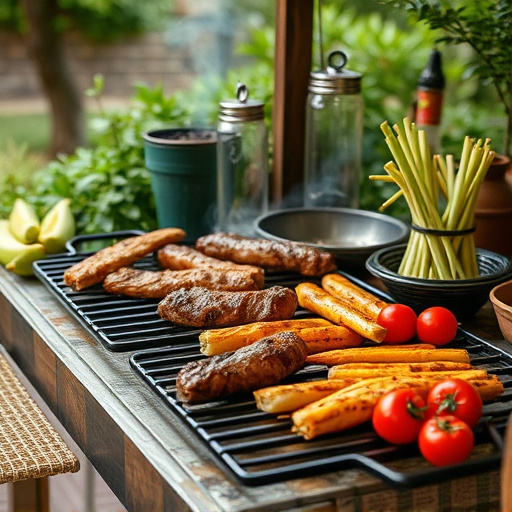Selecting the perfect BBQ pork rib cut (short vs. baby back) is key to grilling success. For tender, juicy results, use dry brining with salt and spices. Combine marinades and rubs for flavor synergy. Use indirect heat for slow-cooked, juicy ribs. Smoke over wood chips for smoky depth. Slow cook for soft, flavorful larger cuts. Glaze with sauce for sweetness and tang. Rest and serve properly for juicy bites.
Unleash your inner BBQ master with these essential grilling tips for delicious barbecue pork ribs! From selecting the perfect cut to mastering indirect heat techniques, this guide covers everything you need to know. Learn the art of dry brining for intense flavors, discover mouthwatering marinades and rubs, and understand the science behind slow cooking. Whether you’re a seasoned pro or a newbie, these tips will elevate your BBQ game, ensuring perfectly grilled, tender ribs every time. Get ready to impress with your signature bbq ribs recipe!
- Selecting the Right Ribs: Choosing Your Cut
- Dry Brining: Unlocking Flavor Potential
- Marinades and Rubs: A Flavorful Foundation
- Grilling Techniques for Perfect Ribs: Direct vs Indirect Heat
- Mastering the Smoke: Types of Wood and Charring
- Slow Cooking: The Key to Tender Ribs
- Glazes and Sauces: Adding Sweetness and Tanginess
- Resting and Serving: Ensuring Flavor Infusion
Selecting the Right Ribs: Choosing Your Cut
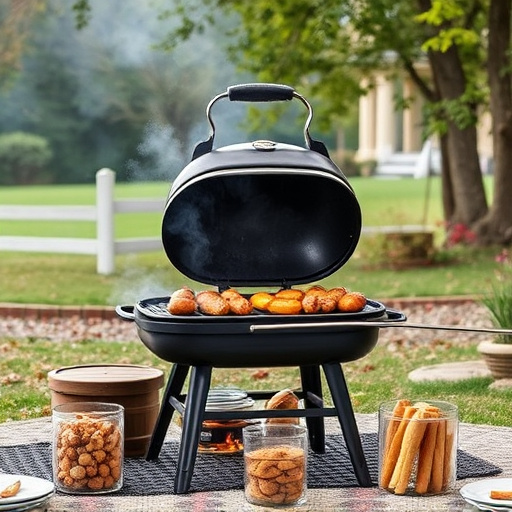
When it comes to grilling perfect BBQ pork ribs, selecting the right cut is half the battle won. Look for bbq ribs recipes that focus on either short ribs or baby back ribs. Short ribs, as the name suggests, come from the shorter end of the ribcage, offering a more tender option with abundant marbling. They require slower cooking methods like smoking to break down their connective tissues, resulting in melt-in-your-mouth meat. On the other hand, baby back ribs are slightly larger and have a distinct bone structure that provides a meaty experience. These ribs benefit from faster grilling techniques to achieve a charred exterior while keeping the interior juicy.
The cut you choose greatly influences the flavor profile and texture of your final dish. Each rib type has its unique cooking characteristics, so understanding these variations will ensure you pair the right grilling tips for BBQ ribs with the ideal cut. Whether you’re a smoker or a grill master, selecting the right ribs is crucial for an unforgettable culinary experience.
Dry Brining: Unlocking Flavor Potential
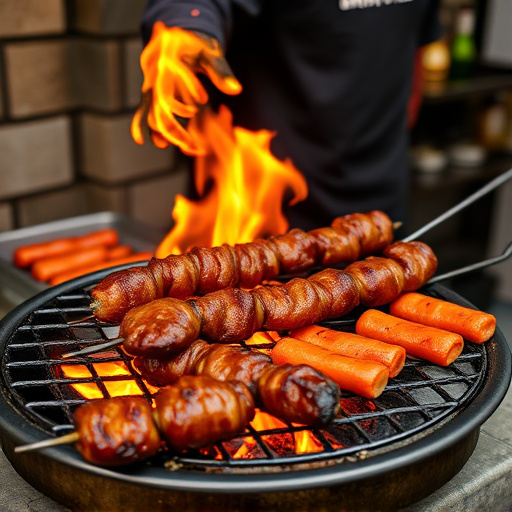
Dry brining is a simple yet powerful technique that can elevate your BBQ ribs recipe to new heights. By curing the pork ribs with salt and spices before grilling, you’re essentially unlocking their flavor potential. This process draws out moisture from the meat, allowing the seasoning to penetrate deeply, resulting in incredibly tender and juicy ribs with a burst of flavors.
Start by rubbing a generous amount of coarse sea salt or kosher salt all over the ribs, both sides and the ends. You can also add other dry spices like paprika, garlic powder, peppercorns, and onion powder for an extra kick. Leave the ribs salted for at least 2-4 hours (or even overnight) in the refrigerator. This will not only enhance the flavors but also help to break down some of the collagen, making your ribs incredibly tender when grilled.
Marinades and Rubs: A Flavorful Foundation
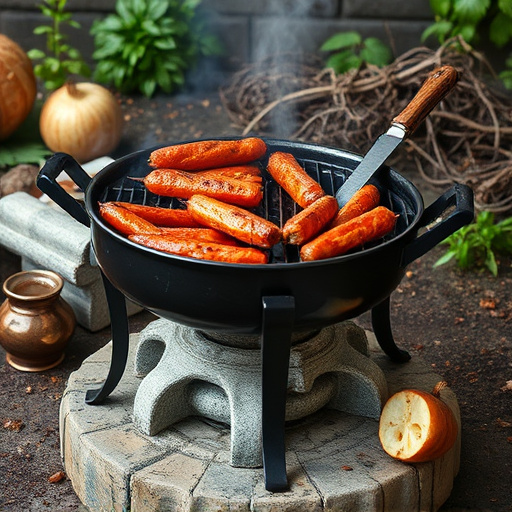
Marinades and rubs are essential components in creating a mouthwatering BBQ ribs recipe. Marinades, with their blend of acids, oils, and spices, penetrate the meat, enhancing its flavor and tenderness. These liquid mixtures can be simple, using just a few ingredients like garlic, soy sauce, and lemon juice, or complex, featuring an array of herbs, chili peppers, and exotic fruits. The key is to let the ribs marinate for several hours—or even overnight—to ensure maximum absorption of flavors.
Rubs, on the other hand, are dry mixtures that create a delicious crust on the rib’s surface. A good rub combines spices like paprika, brown sugar, salt, and pepper, often with added ingredients such as chili powder or dried herbs. Applying the rub generously to both sides of the ribs before grilling allows the flavors to caramelize and impart a smoky, savory taste. Combining marinades and rubs is a game-changer for any BBQ ribs recipe; they work together to create a layer of flavor that lingers long after each bite.
Grilling Techniques for Perfect Ribs: Direct vs Indirect Heat
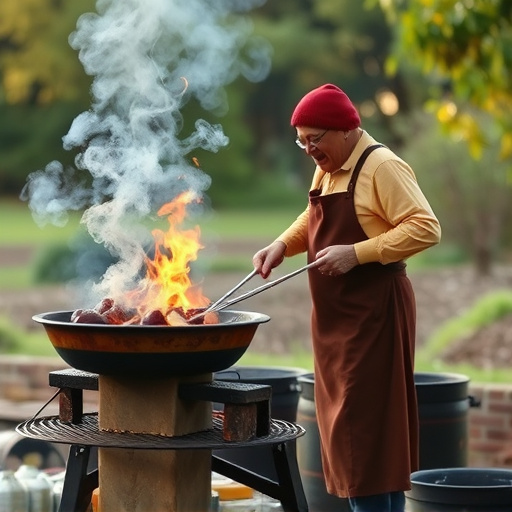
When it comes to grilling perfect BBQ ribs, understanding the difference between direct and indirect heat is key. Direct heat cooking involves high temperature and direct exposure to flames, similar to searing a steak. This technique is ideal for quick cooking and creating a crispy exterior on your ribs. However, for tender, slow-cooked ribs, indirect heat is the way to go. It uses lower temperatures and traps heat within a closed environment, much like a traditional oven.
For delicious BBQ ribs recipes, opt for an indirect heating method. This allows the ribs to cook slowly, ensuring the meat becomes incredibly tender and juicy. By controlling the temperature and limiting direct flame exposure, you can achieve that signature barbecue flavor without overcooking or drying out your ribs. Remember, the key to mouthwatering grilled pork ribs is patience and mastering the art of heat control.
Mastering the Smoke: Types of Wood and Charring
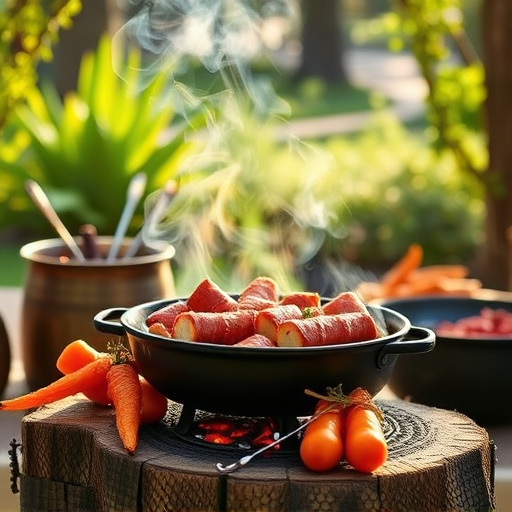
Mastering the art of smoking is key to achieving delicious, tender BBQ ribs on the grill. The type of wood chips or chunks used can significantly impact the flavor profile of your ribs, so it’s essential to choose wisely. Different woods offer unique aromatic compounds that will infuse your pork with delicious smoke flavors. Oak, hickory, and mesquite are popular choices known for their robust, smoky taste.
Charring is another critical aspect of grilling BBQ ribs. While it may seem counterintuitive, a light charring on the rib’s surface adds complexity and depth to the overall flavor. It also helps to caramelize natural sugars, enhancing the sticky, saucy glaze that makes ribs so irresistible. Achieve this by direct high-heat cooking over the coals or using a grill’s side burner for a controlled sear.
Slow Cooking: The Key to Tender Ribs
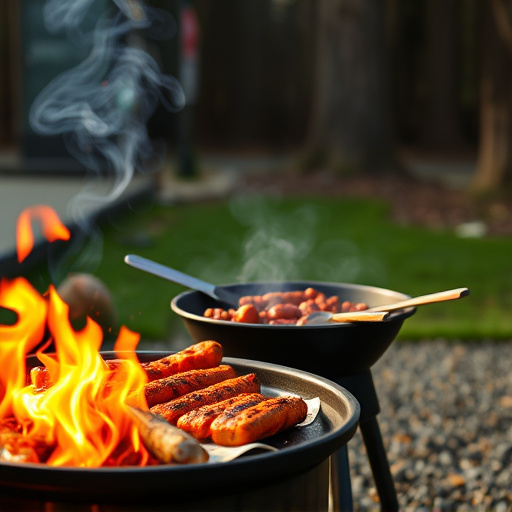
Slow cooking is a fundamental technique for achieving tender, mouthwatering BBQ ribs. Unlike rushed methods that can leave ribs tough and chewy, slow cooking allows the collagen in the meat to break down, resulting in incredibly soft and flavorful ribs. This process is especially crucial when dealing with larger cuts of pork ribs. By using low and steady heat over an extended period, you ensure that the ribs cook evenly, locking in juices and developing a deep, rich flavor.
When preparing BBQ ribs for grilling, consider starting them in a slow cooker or oven at a lower temperature. This step breaks down the connective tissues, making them easier to chew and more responsive to your favorite rub or sauce. Once they’re tender, you can finish them off on the grill for that characteristic smoky flavor. This two-step approach is a game-changer for any BBQ ribs recipe, guaranteeing that every bite is as delicious as it should be.
Glazes and Sauces: Adding Sweetness and Tanginess
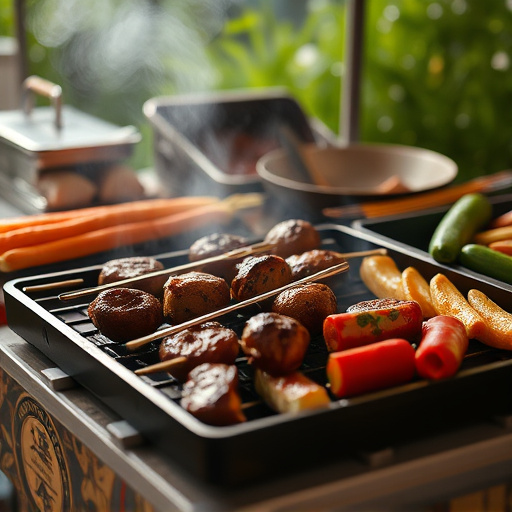
When it comes to grilling perfect BBQ pork ribs, glazes and sauces are essential for adding both sweetness and tanginess that elevate the overall flavor profile. A good glaze or sauce not only enhances the taste but also helps in creating a delicious crust on the surface of the ribs. Many popular options include classic barbecue sauce, honey-mustard glazes, and even fruity combinations like strawberry-jams. These additions can be brushed onto the ribs during grilling to achieve a sticky, caramelized layer that is both mouthwatering and visually appealing.
For best results, apply the glaze or sauce liberally but evenly throughout the cooking process. Timing is key; applying it too early may prevent the ribs from developing a nice sear, while applying it too late might result in a dry, tough texture. Experimenting with different recipes and combinations can help you find your preferred balance of sweet and tangy flavors, making each BBQ rib grilling session a memorable culinary experience.
Resting and Serving: Ensuring Flavor Infusion
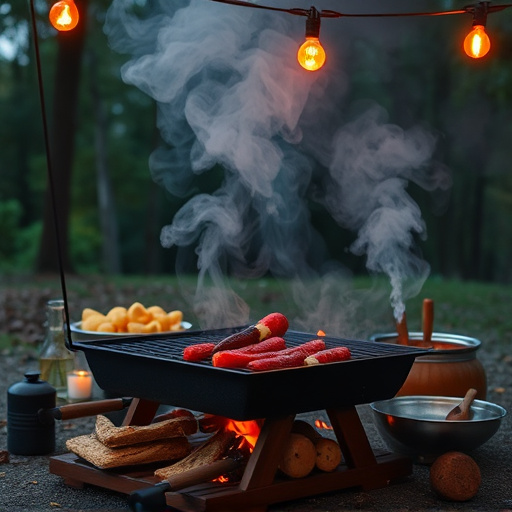
After grilling your perfect BBQ ribs, proper resting and serving techniques are essential to allow the flavors to meld and enhance the overall dining experience. When finished grilling, remove the ribs from the heat source and let them rest for at least 10-15 minutes. During this time, the juices redistribute, ensuring each bite is tender and juicy. Resting also allows the exterior to cool slightly, making it easier to handle and serve.
Serve your BBQ ribs with a generous drizzle of your favorite sauce on top, offering guests an opportunity to customize their taste experience. Pair them with sides like coleslaw or cornbread for a classic combination that complements the rich, smoky flavor of the ribs. Resting and serving correctly will ensure your delicious BBQ rib recipe stands out, providing diners with a memorable culinary journey.
